A Luxurious Sushi Feast At Sushi Ya Ginza
An Insight Into Tokyo's Elite Sushi Dining
Don't say you love sushi before dining at a place like this.
When it comes to eating sushi in Japan you are never short of options: there’s kaiten-zushi (conveyor belt), extremely good sushi at regular restaurants and izakayas — and some good rolls even at your local Family Mart. However, the infinite world of Japanese sushi extends way beyond affordable and convenient eats. In a high-end traditional Japanese sushiya (a sushi restaurant in Japanese), sushi making is elevated to the form of art. In places like this, sushi is something else. And it comes with a chef demonstrating superb knife skills and unique food preparation techniques.
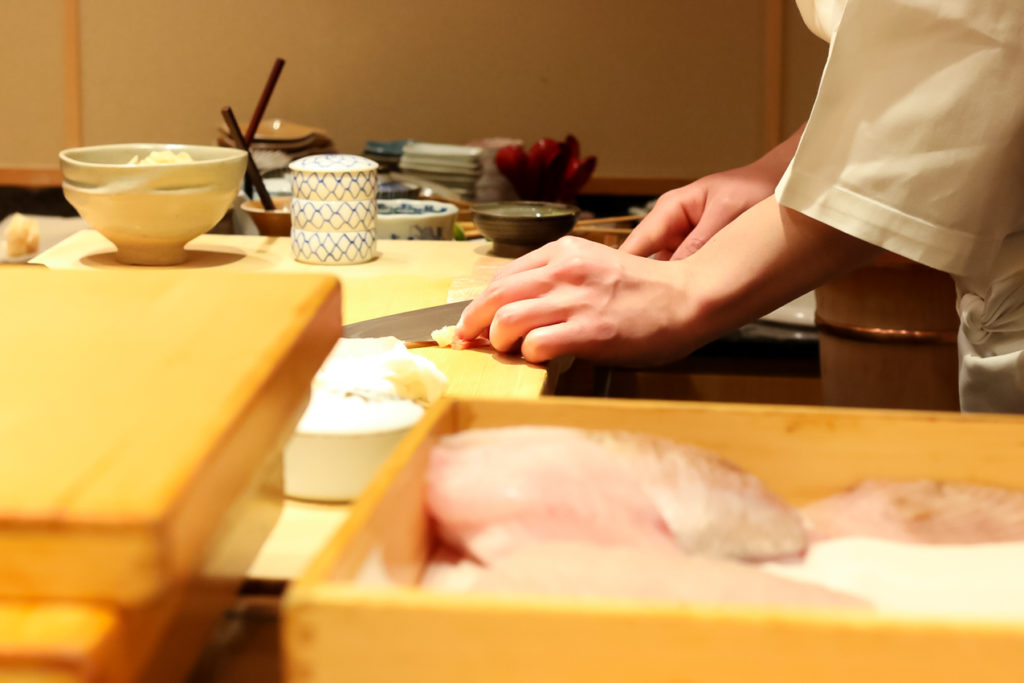
There’s sushi and Sushi — taste the difference
The main difference between high-end and mid-range priced sushi shops is the skill level of the chef, which is typically a matter of where they apprenticed. There are varying degrees of prestige attached to different chefs: The more prestigious the master, the more skilled the apprentice is believed to be. Dinner in these prestigious sushiya can have you easily pay a minimum of ¥20,000 for a full course, and that can be regarded as fairly reasonable. But you know what you’ll be paying for. Traditionally, it takes an average of 10 years of on-the-job training and apprenticeship to become a sushi chef, or itamae, of the highest caliber. (Just watch a few scenes of “Jiro Dreams of Sushi” and you’ll know what I’m talking about).
In a high-end traditional Japanese sushiya, sushi making is elevated to the form of art.
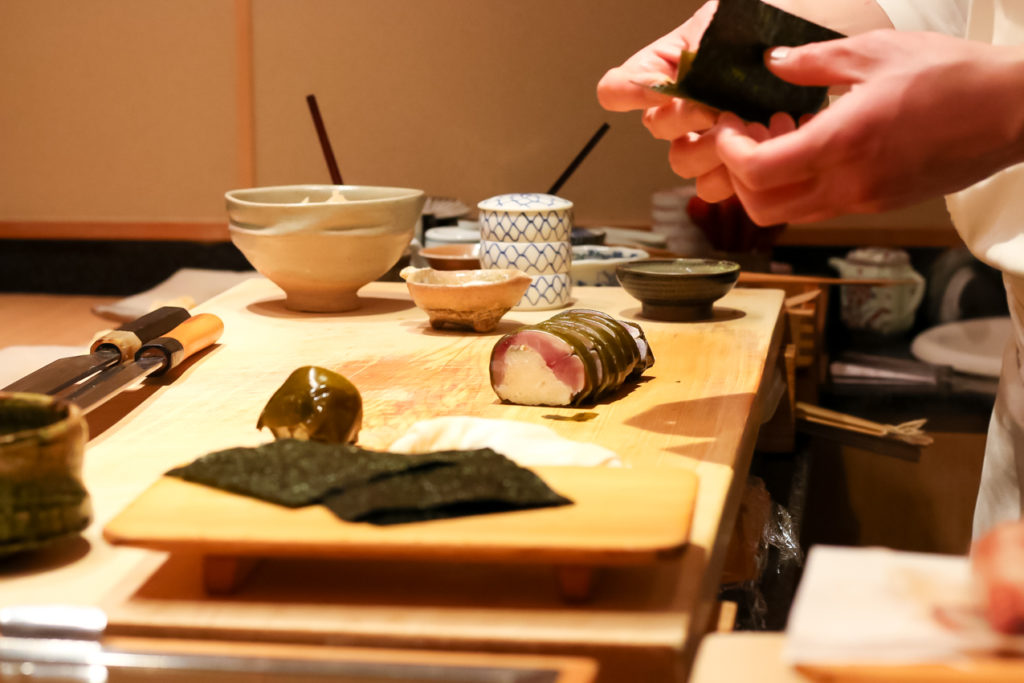
Among thousands of sushi restaurants in Tokyo alone, there are only a handful that truly stand out and have become highly acclaimed. Japan’s own version of TripAdvisor – Tabelog – currently lists three Michelin-starred Sushi Saito as number one sushi restaurant in Tokyo. Other popular sushiya include Sukiyabashi Jiro, Sushi Kanesaka, Sushi Mitzutani, Sushi Yoshitake, Sushi Sho, and a few others. The sad reality, however, is that making reservations in any of these restaurants is nearly mission impossible, and takes months of advanced planning and even that might not be sufficient.
My lucky catch in Ginza
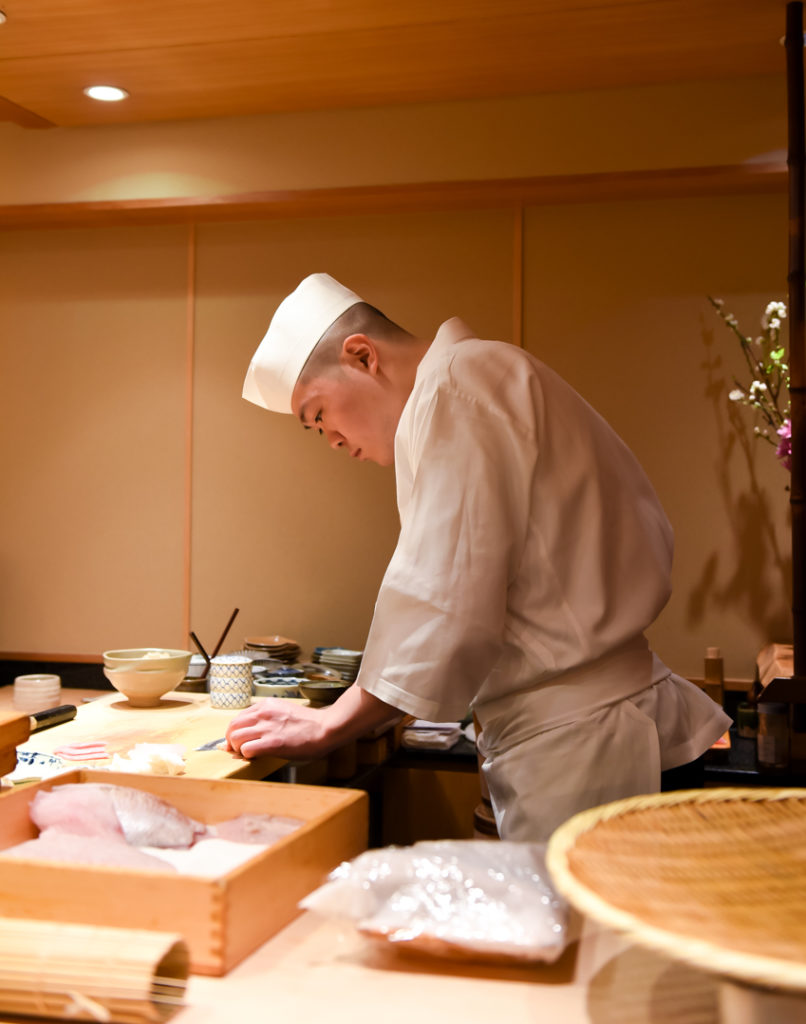
Sushi Ya Ginza’s chef, Takao Ishiyama
Thankfully, with a lot of patience, persistence and advanced planning, I was lucky to score a lunch reservation at Sushi Ya Ginza, one of the hottest sushi spots in Tokyo at the moment. This cozy eight-seat restaurant tucked away in the unassuming alley of Ginza is helmed by Takao Ishiyama, a young chef who previously trained within Sushi Kanesaka and Sushi Saito. In addition to mastering the sushi, he also speaks English and is communicative and friendly (not always the case at sushiya), which makes the dining experience at his restaurant even more pleasant.
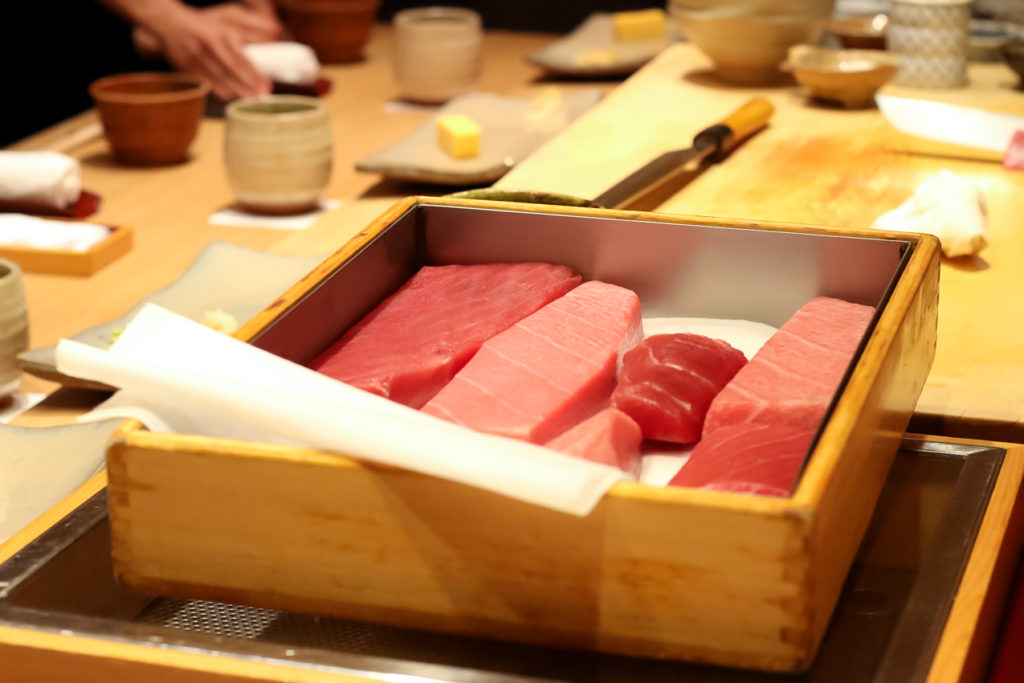
Nigiri or Omakase
The first thing you’ll notice as you enter the restaurant is that there is no written menu. Instead, you have two options: a sushi (nigiri) set or omakase, which means that you trust the chef to serve you whatever he deems is the best offer of the day. Since I didn’t know if I would ever be able to revisit again (it isn’t cheap, hey), I didn’t want to limit myself with a sushi set, so I went for the big omakase (even though it was a bit nerve-wracking not to know how much it would cost in the end).
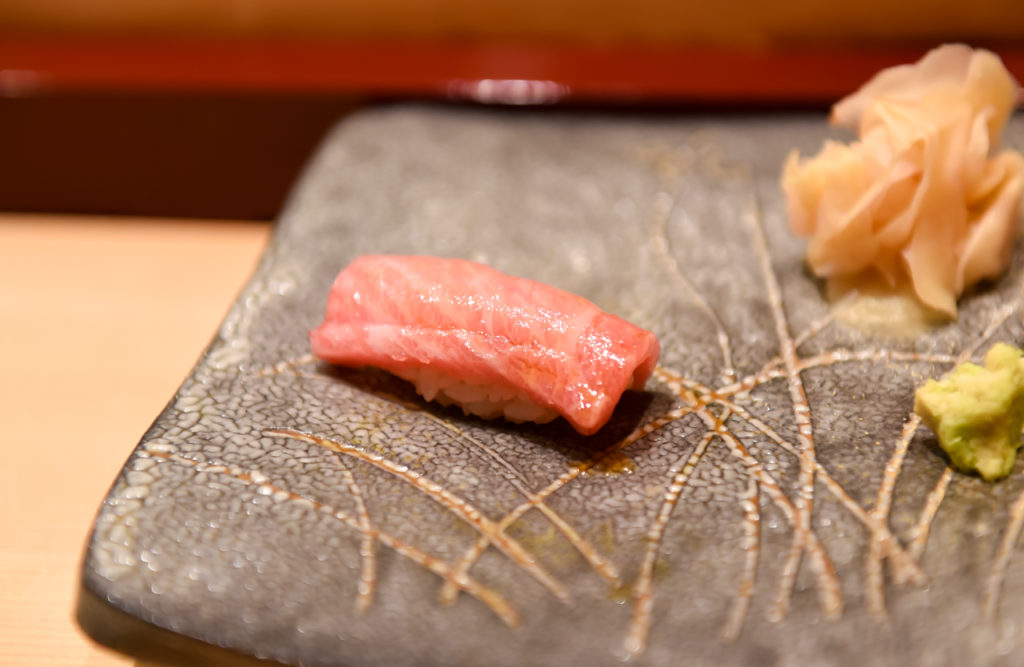
The sushi king: Otoro (fatty tuna)
The second thing you notice — and can’t keep your eyes off — is the choreographed performance the chef puts into the preparation of your meal: the work and attention to detail Ishiyama put into each morsel was something I hadn’t really seen yet. But that, indeed, is part of the real sushi-eating process.
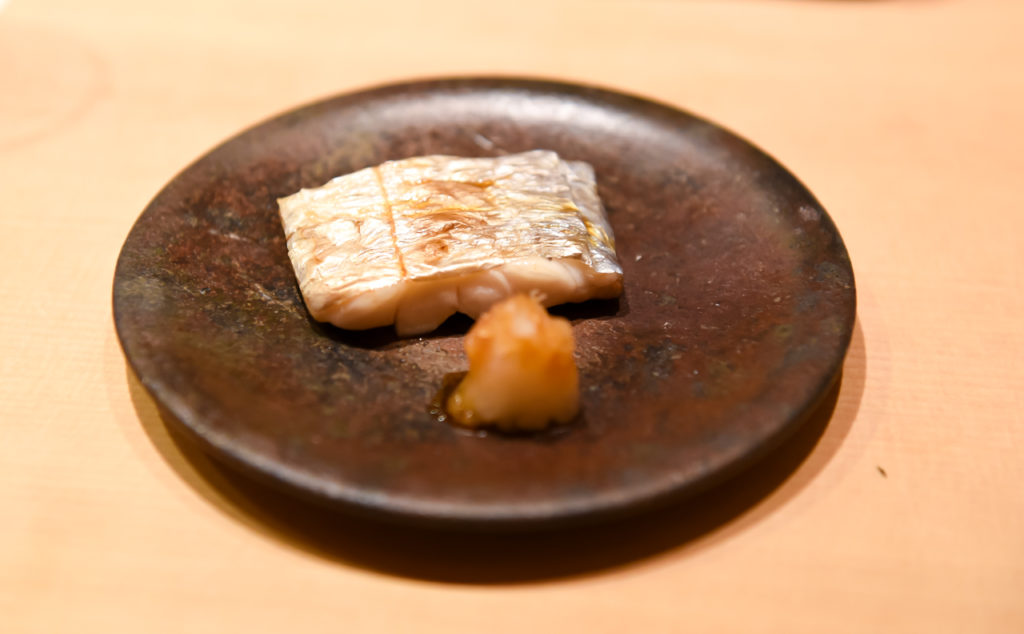
Saba (Mackerel)
My meal had a distinct flow, starting with a succession of exquisitely seasoned otsumami (starter snacks), followed with classic nigiri prepared and served one at a time. From the otsumami, the clear stand out was incredibly rich and flavorful katsuo (skipjack tuna) – smoked, lightly seared, and served with mustard soy sauce. The second, a cooked tuna cheek served in ponzu sauce, had a melt-in-your-mouth texture, while the monkfish liver lightly covered in yuzu zest and the squid served in yuzu sauce were tender and rich in taste. I equally enjoyed the signature Kanesaka-style otsumami — kegani, or hairy crab from Hokkaido. The crab was succulent and rich in umami, and its sweetness balanced very well with the vinegar sauce on the side. Finally, the seasonal saba-zushi was fantastic. The perfectly cooked and seasoned rice paired so well with flavorful cured mackerel and pickled seaweed wrap.
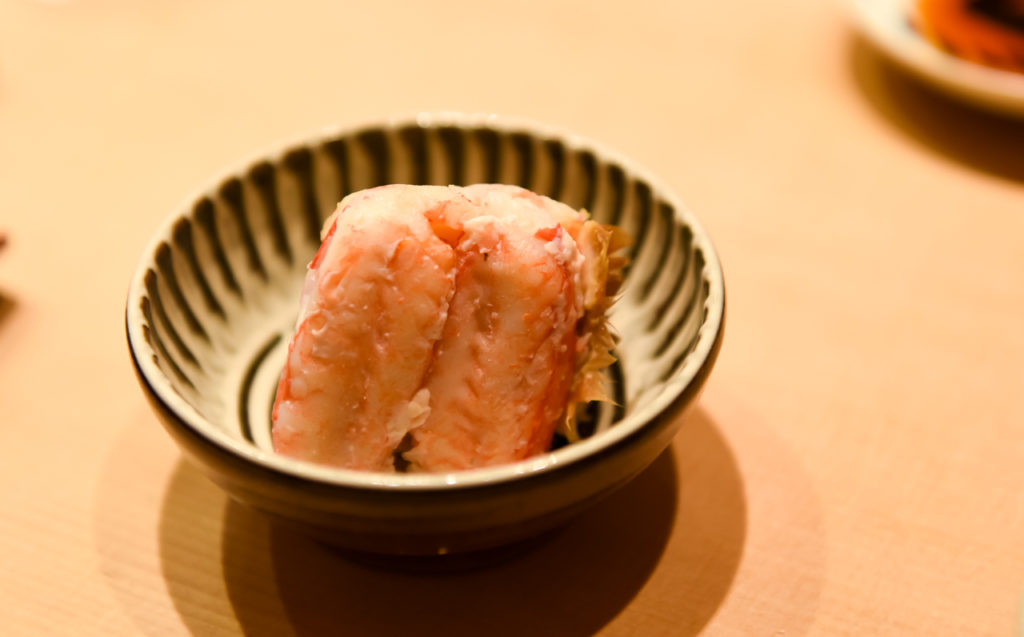
Hokkaido hairy crab otsumami
You won’t have enough of it
I’m being honest here. After ten courses of otsumami, I proceeded to 14 pieces of nigiri and yes, gladly ate it all. Again, rice was cooked to the point, served at perfect body temperature, and came in the perfect harmony with the fish. Alas, I wished to have tasted a tad of more vinegar in my rice, although this is very subjective to the palate and it certainly didn’t impede me from enjoying my nigiri overall. If I had to pick the favorites, I’d go with buttery medium fatty tuna, creamy uni (sea urchin), and kohada (gizzard shad). The latter is supposedly the test of the quality of a sushiya, and it definitely passed with flying colors having a slight sweetness to offset its curing in vinegar. The aji (horse mackerel), and the salt water eel also stood out.
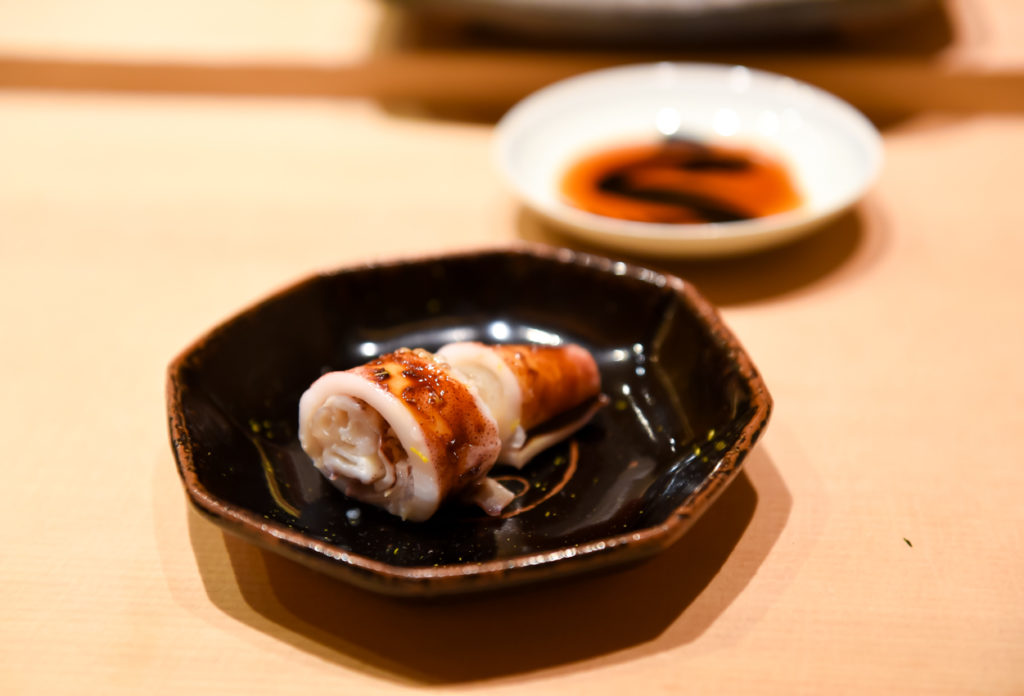
Squid
We ended the meal with tamago (a type of Japanese omelet, which is made by rolling together several layers of cooked egg). Light, smooth and custardy, it had a wonderful sweet finish. I chuckled a bit when Ishiyama asked me at the very end if I was sufficiently full. He showed me what a real sushi should taste like, and there is no going back. My wallet might have been a bit upset with me in the end (my lunch meal came to roughly over ¥20,000), but this unique insight into Tokyo’s elite sushi dining was invaluable.
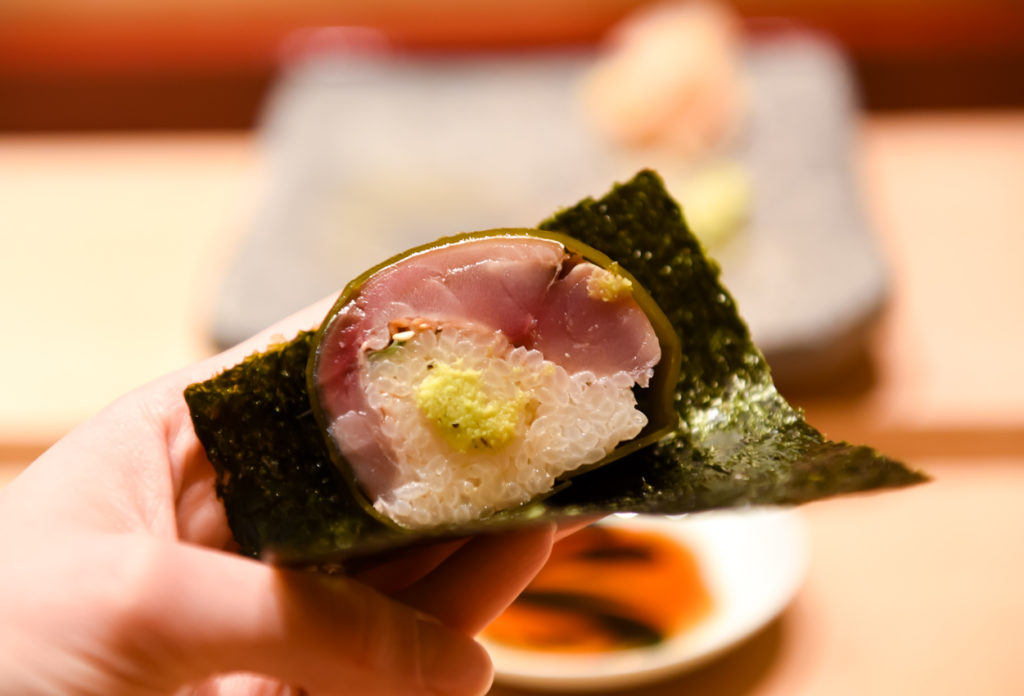
Saba-zushi
The Deets
Address: 6-3-17 Ginza, Chuo-ku, Tokyo
Business hours: 12 p.m.- 2 p.m. (Lunch), 5 p.m.-10 p.m. (Dinner). Closed Mondays.
Average cost: ¥8,000-¥10,000 (Lunch), ¥20,000-¥30,000 (Dinner)
Fully non-smoking.












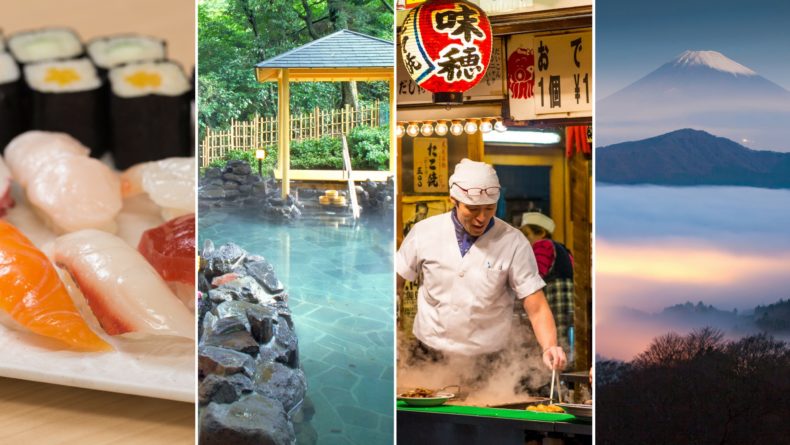
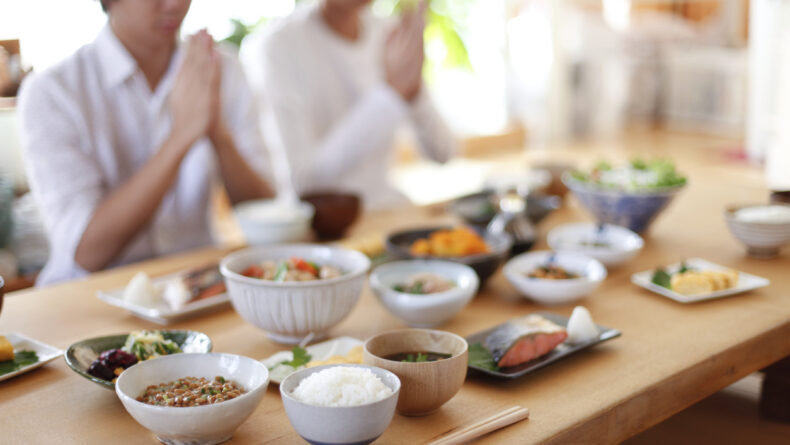
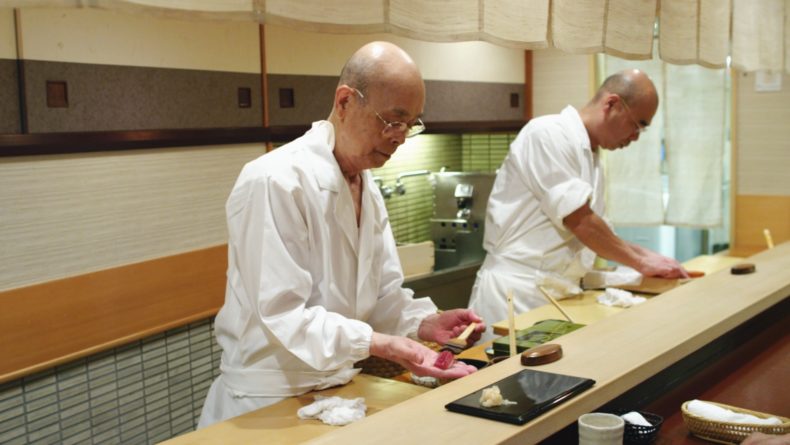
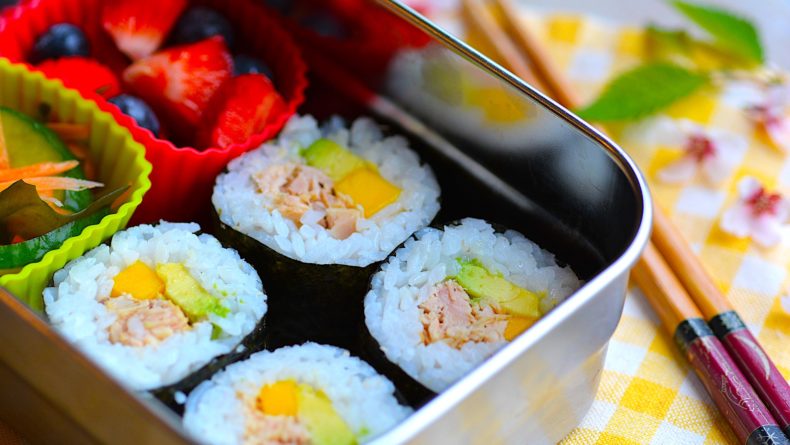
Leave a Reply